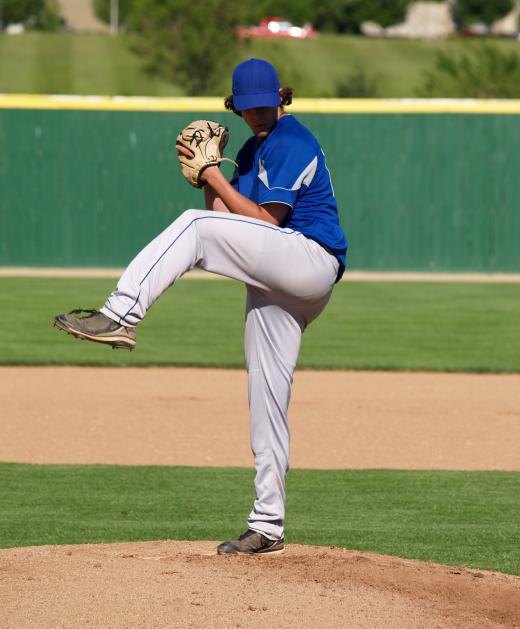Kinesiology is the study of how the body moves, its biomechanical abilities and limitations. To study the biomechanics of pitching is to evaluate specifically how the body has to move to produce the best pitch humanly possible. This biomechanics of pitching is facilitated by computer equipment that monitors various kinetic and angular movements during a person's pitch, and then compares the throw with data collected from analyses done on star pitchers.
Several concerted body movements are needed to properly pitch a baseball. According to the American Sports Medicine Institute, the pitch can be divided into six distinguishable parts. The windup leads into a long stride that ends with the arm being cocked, accelarating, decelerating and finally following through on a pitch toward home plate. Each of these movements are supported by different sets of muscles and joints. Some require arm and hand movements, while others involve the hips, feet and legs.

Specifically, these six movements each place the pitcher's body in the properly balanced position throughout the motion needed to deliver the ball to the plate. The windup entails the plate-sided knee being pulled to the chest and the torso being swung to the rear to provide a high center of gravity. This bursts into a wide-open step with the crouched knee being planted forward of the body, and the throwing arm rolling around to a position of leverage in the rear of the pitcher. A long swoop of acceleration into that forward step, followed by a brief spell of deceleration, happens just before the ball is released and the arm carries around into a follow through.

The biomechanics of pitching also delves into proper hand positioning during the ball release. Studying the methods used by famous pitchers to release the ball, which result in different pitches like the fast ball, curve ball and slider, can help a young pitcher develop those same skills. Bad habits can be spotted merely by analyzing the size of a pitcher's post-cocking step, the arc and rotation of the arm, and even the angle and trajectory of the elbow in relation to the throwing hand.

The technology used in 2011 to analyze the biomechanics of pitching is able to spot deficiencies in even a professional pitch. Using data derived from famous pitchers, the machinery used by the American Sports Medicine Institute, for instance, compares these "optimum averages" to new pitches monitored with the help of motion-sensor cameras triggered by transmitters worn at various points on the pitcher's body. Three-dimensional data is then used to show, step by step, the ways in which pitchers can throw the ball more safely with more authority.
